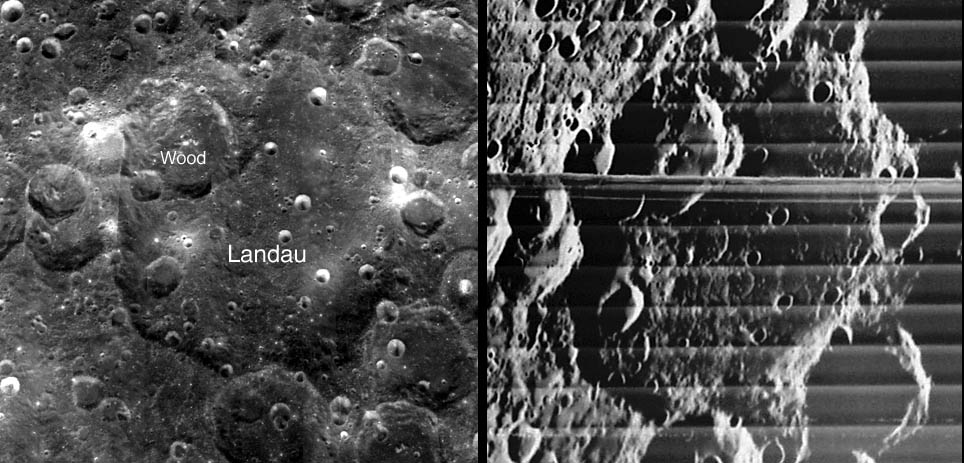February 12, 2016
The Lunar Crater Wood
Originally published April 18, 2005
Image Credit: Clementine and Lunar Orbiter V |
|
The Lunar Crater Wood At 43 degrees N, 121 degrees W, on the lunar farside, the 78 km wide crater Wood sits on the rim of Landau. Wood is an older crater, lacking the brightness of a recent impact, and the northwestern rim has a broad area of collapse, perhaps caused by a more recent crater. In any case, the rim outline on the northwest extends considerably westward, distorting the craters circularity. The Lunar Orbiter V image, marred by a horizontal defect, shows that the eastern floor of Wood, like the northeastern floor of Landau is surfaced with a smooth material that looks like mare lava - Woods floor even hosts a mare ridge. But Clementine multi-spectral data demonstrate that this is not mare lava. Once again, a highland crater has a surface that morphologically looks like lava, but spectrally isnt. Most likely the Moon has lavas of spectral types unsampled by Apollo. These two images show that although we have some basic data for the farside, it is far from what is necessary to understand its details. All the more shame that amateur imagers cant contribute new data! By the way, this crater honors Robert W. Wood (1868-1955), an American physicist who discovered that the Aristarchus Plateau is the darkest spot on the Moon in ultraviolet light. Yesterday's LPOD: Collapsing Mountain? Tomorrow's LPOD: Before and After |
|
Author & Editor: |
COMMENTS?
Register, Log in, and join in the comments.




